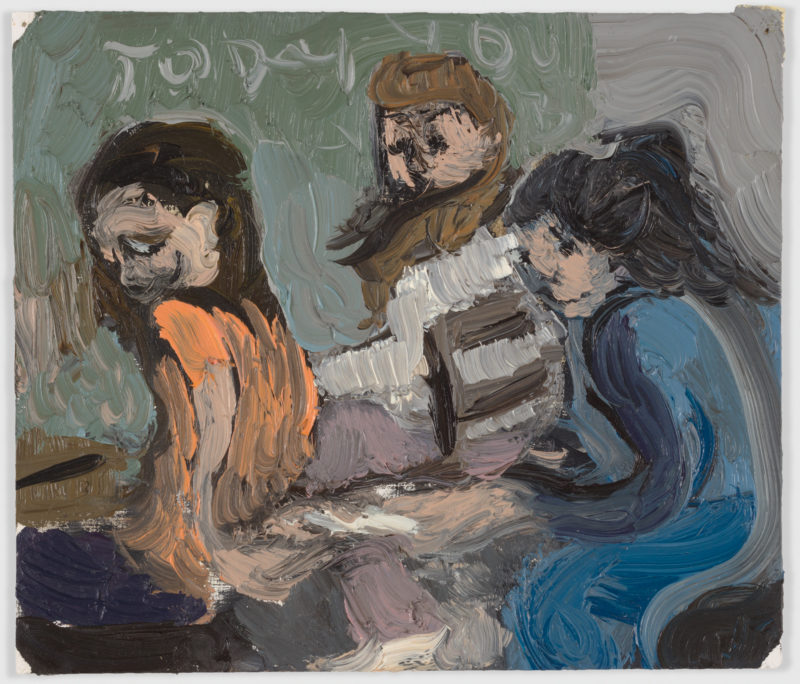Using the alla prima (wet-into-wet) method, Jane Corrigan paints private worlds in a messy, almost sculptural way. Each painting contains many paintings—one of them being the viewer’s fluctuating sense of what might be happening; another, what is about to happen. Corrigan’s subjects call to mind good actors: they react in heightened yet ambiguous ways, stirring a vivid narrative that always leaves room for the unknown. We discussed her painting Passing the Note over the phone. Corrigan was born in Shawville, Quebec. She currently lives and works in New York.
—Leopoldine Core
THE BELIEVER: What were you thinking about when you made this painting?
JANE CORRIGAN: I have these memories of having difficulty—I had a lot of difficulty in grade two math. I had this teacher who was really mean, and she put me in the back of the room all the time and punished me. So I made a lot of paintings that were an imagined storyboard of some of those experiences—almost like I was trying to replace the memories. I think I had a sketch of a girl in a classroom sitting in my studio for almost a year before I decided to pursue it. It was a girl who looked like she was doing her homework and she looked really miserable and it was on my wall, a little work on paper. And finally I thought, Who else is in the classroom besides this one miserable girl?
BLVR: Do you always have an idea of the narrative that is taking place? How much is figured out beforehand?
JC: I don’t. I never know. I discover characters and feelings as I go. There is a kind of chase that goes on—I’m trying to figure things out as quickly as possible; I’m chasing down the marks, because if you just stand there doing nothing, you know, nothing happens. These small paintings are done in, like, ten or fifteen minutes. And I think there’s something in the pursuit that makes them happen so quickly. I want to get them over with—like, I’m kind of impatient. Though I do spend a lot of time figuring out the facial expressions and the gestures. I’m moving the paint around; I’m literally pushing it around until I’ve hit a very specific note, until they have the look I want. They’re doing it exactly and they’re also doing it kind of naturally.
BLVR: Your paintings are very action-oriented. Someone is usually doing something. Where does that desire to depict activity come from, do you think?
JC: The only explanation I have for that is if I’m getting to know a particular subject, I take...
You have reached your article limit
Sign up for a digital subscription and continue reading all new issues, plus our entire archives, for just $1.50/month.
Already a subscriber? Sign in





